Table of Contents
Introduction
Who doesn’t love mangoes? Many in India look forward to summer so they can enjoy mangoes. Often called the “King of Fruits,” mangoes are an integral part of Indian culture and cuisine. With over 1,000 varieties cultivated across the country, each mango offers a unique flavour, texture, and aroma.
From the rich sweetness of Alphonso to the fragrant, late-season Neelam, and from juicy to fleshy varieties each type of mango brings something special to the table. It’s no surprise that mangoes hold such a cherished place in Indian hearts and kitchens.
Since it’s impossible to cover all 1,000 varieties, we’ve selected 10 of the most famous mango varieties in India. Below these, you’ll also find a state-wise list of other notable mangoes. Join us on this flavorful journey through some of India’s best mangoes each celebrated for its origin, taste, and delightful characteristics. Keep reading to explore the world of these juicy treasures!
Top 10 Popular Mango Varieties in India
India is home to numerous mango varieties, but a few stand out for their irresistible taste, rich aroma, and more. Here’s a look at 10 of the most popular mango varieties in the country—each with its own unique flavor and story.
Alphonso Mango
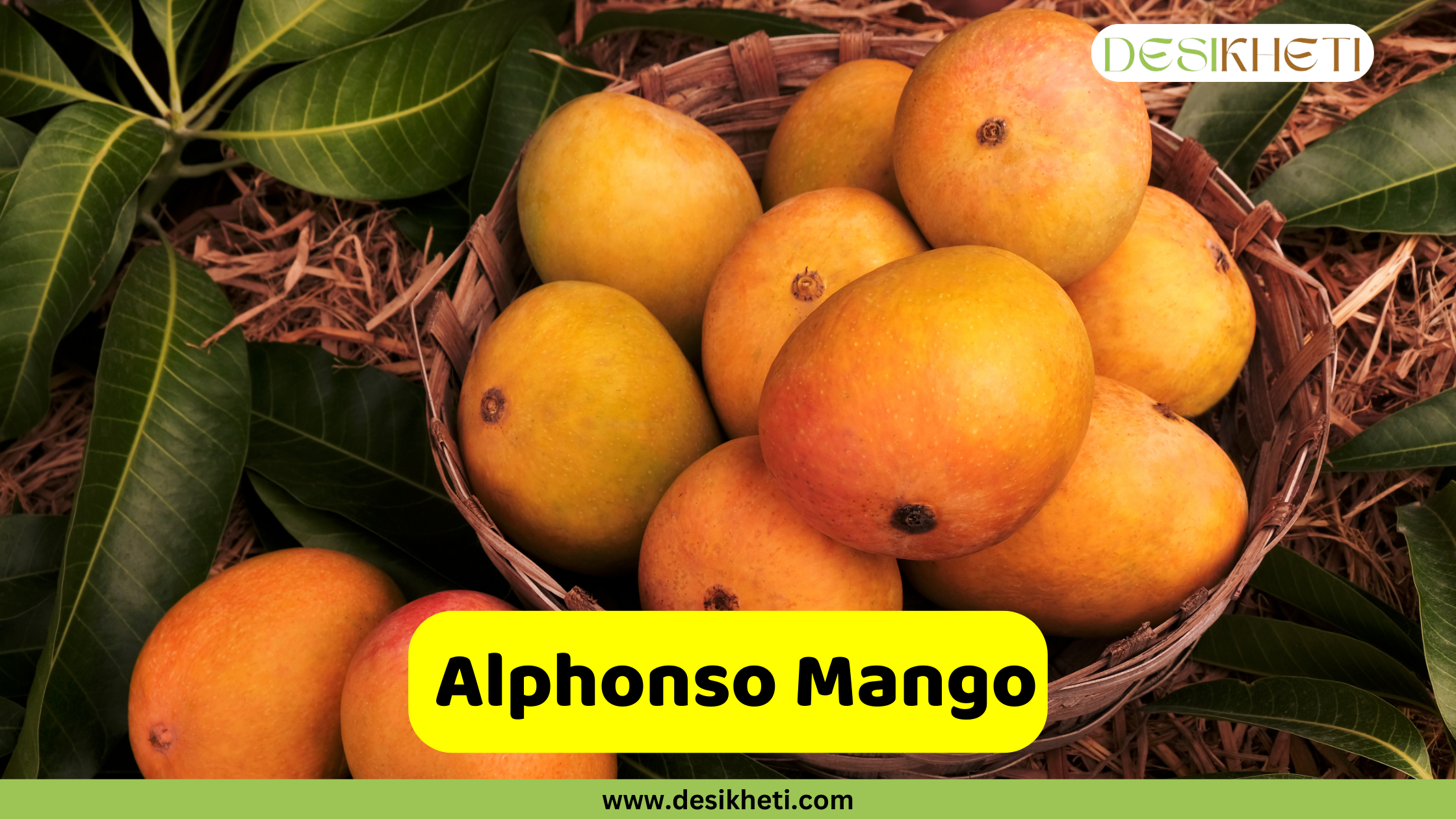
The Alphonso mango, often referred to as the “King of Mangoes,” is one of the most popular and cherished mango varieties in India and around the world. It is also known as “Hapus” in Maharashtra.
This premium variety originates from the Ratnagiri region in Maharashtra. It was introduced by the Portuguese in the 16th century and named after Afonso de Albuquerque, a Portuguese nobleman.
The fruit thrives in hot, dry conditions, with the coastal climate of Ratnagiri and the Konkan region being particularly well-suited for its cultivation. The Alphonso mango has also received a GI (Geographical Indication) tag.
Alphonso mangoes are medium to large in size, with bright golden-yellow skin that may develop a slight red blush when fully ripe. The flesh is juicy, smooth, and fiberless, offering a rich, honey-like sweetness with a subtle tang. Its non-fibrous texture and vibrant orange-yellow pulp make it ideal for fresh consumption, juices, milkshakes, desserts, and processed products like ice creams.
The demand for Alphonso mangoes goes far beyond India’s borders, with strong export markets in the USA, the UK, the UAE, and Japan.
Raspuri Mango
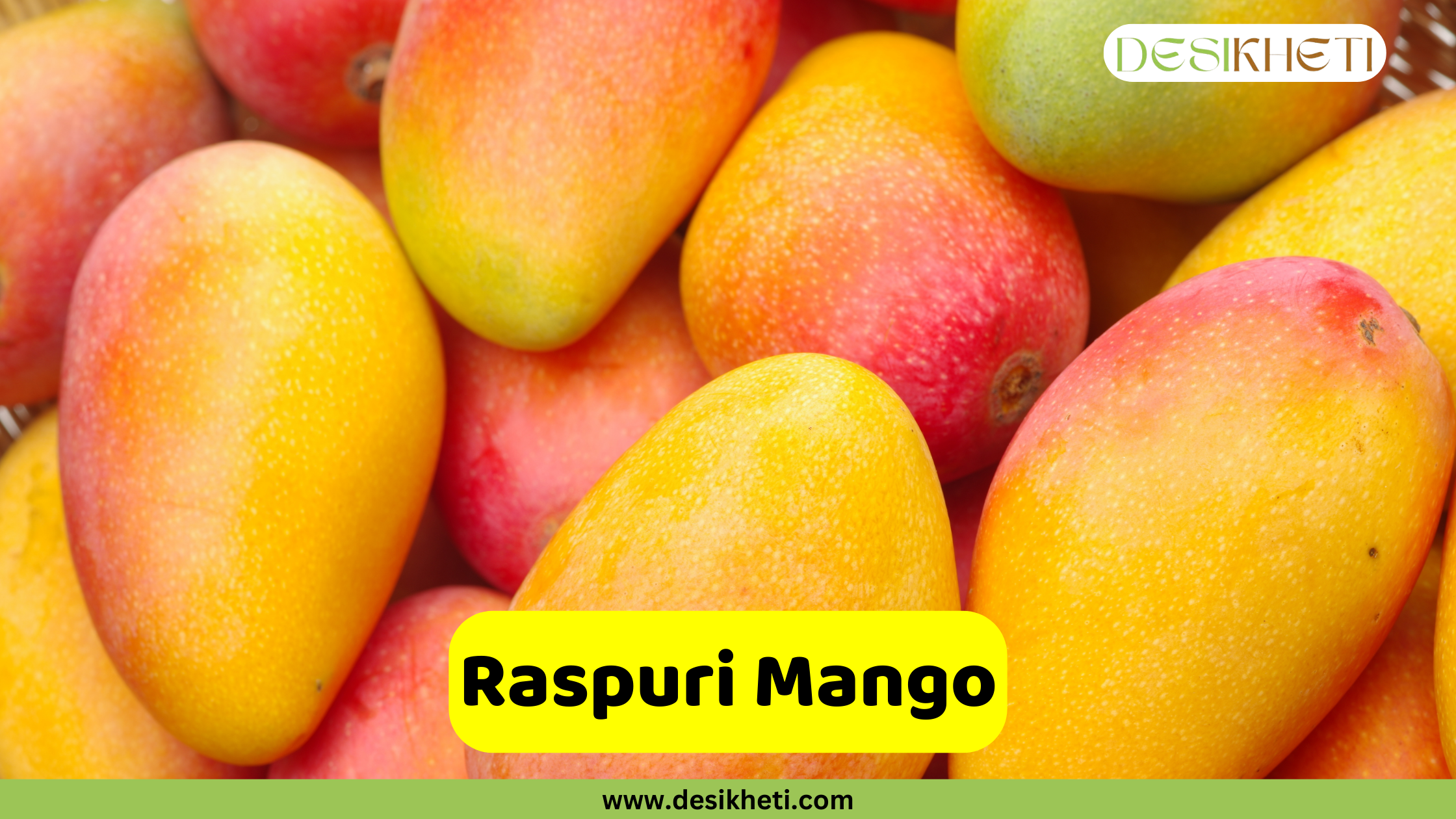
The Raspuri mango is fondly known as the “Queen of Mangoes” due to its excellent taste. Raspuri mango is believed to have originated in the old Mysore region of Karnataka, where it has been cultivated for centuries. This mango is mainly grown in Karnataka and is a widely cherished and popular variety in the region. It is also grown in certain areas of Tamil Nadu and Andhra Pradesh.
The name “Raspuri” is derived from the word rasa, which means juice in Sanskrit and a few other Indian languages. In some regions, it is also known as Pairi Mango.
The Raspuri mango is known for its high juice content, rich aroma, and sweet-tangy flavor. This mango is also rich in carotenes, a precursor of Vitamin A. The skin is thin and turns bright yellow to orange when ripe, sometimes with a slight reddish blush. The pulp is smooth and fiberless, making it perfect for juices, milkshakes, etc.
Dasheri Mango
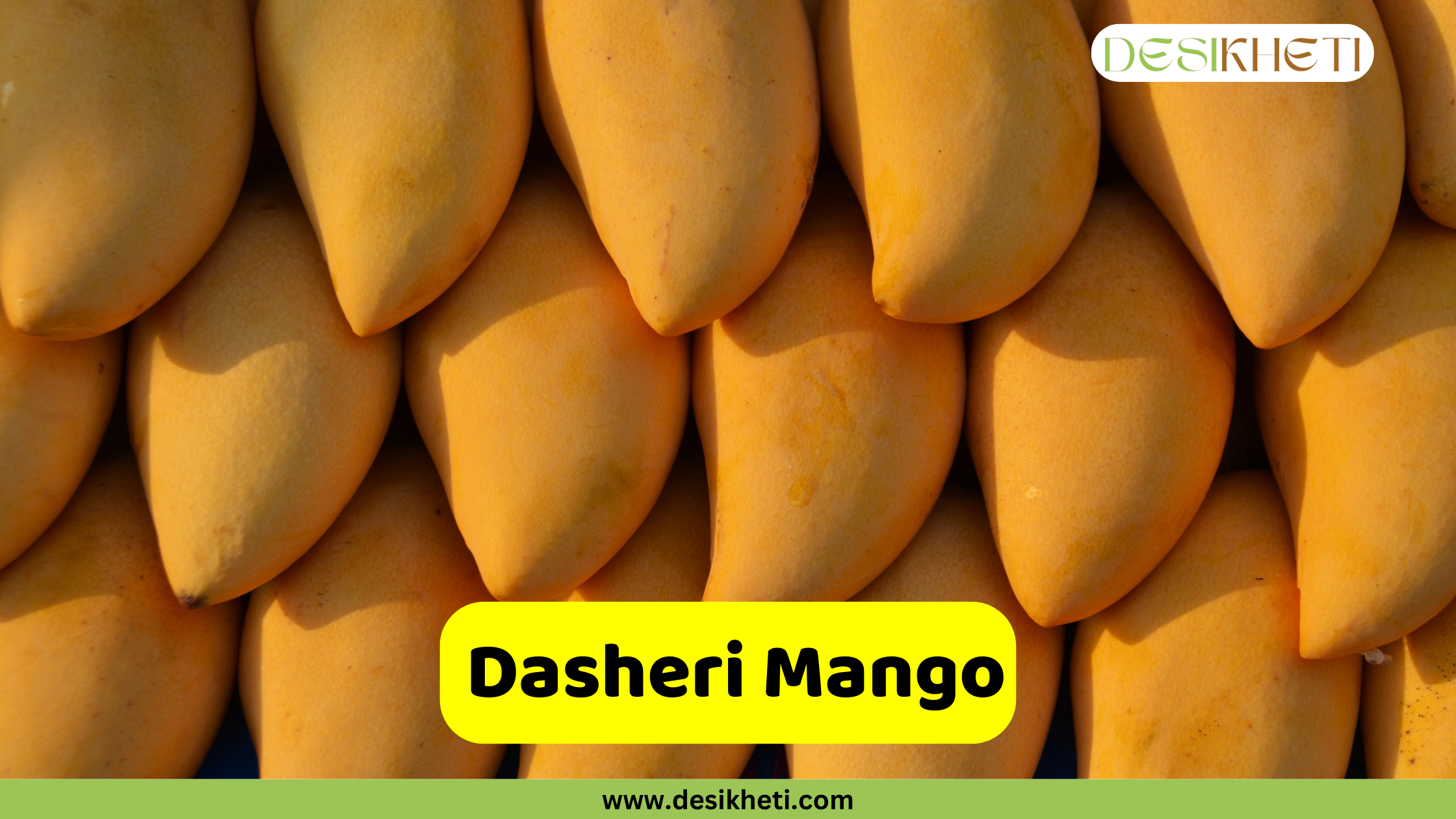
This variety was first discovered in the 18th century in the gardens of the Nawab of Dasheri. The original mother plant of the Dasheri mango still exists in Dasheri village, near Kakori in Lucknow.
Dasheri mango is primarily cultivated in the northern states of India, especially Uttar Pradesh. It is cherished for its juicy, less fibrous flesh and its sweet, tangy flavor. The taste offers a delightful balance of sweetness and slight tartness, accompanied by a distinct aromatic fragrance.
Dasheri mangoes are also exported to several international markets, including countries in the Middle East, Europe, and the United States. This mango can be easily identified by its elongated shape, smooth skin, and vibrant yellow-orange flesh.
Banganapalli Mango
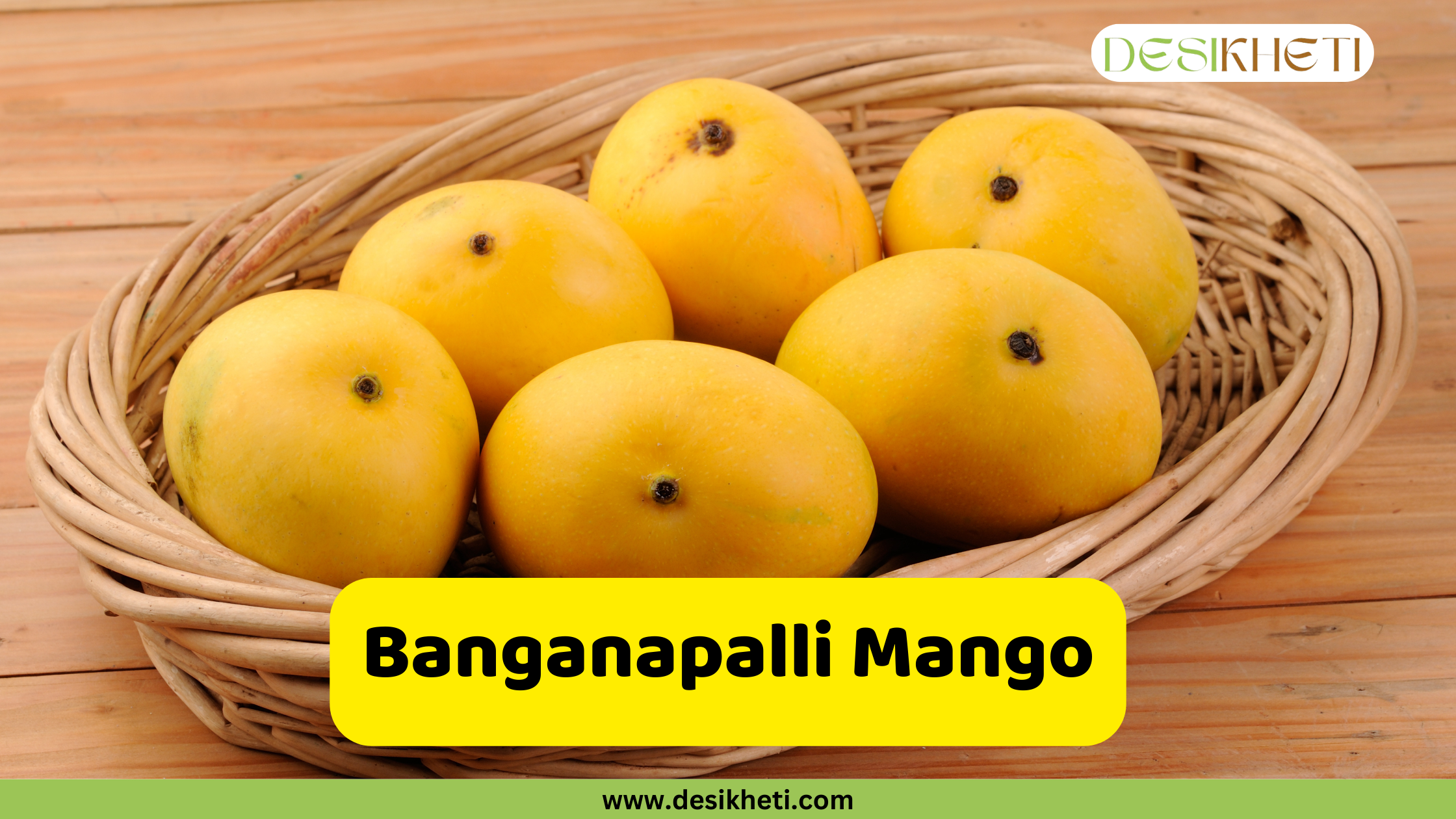
The Banganapalli mango originates from the Banganapalle region in Andhra Pradesh, which is how it gets its name. It has been cultivated in this region for centuries and holds a special place in the hearts of mango lovers. Known for its fleshy texture and excellent taste, the Banganapalli mango combines rich sweetness with a subtle hint of tartness. Its honey-like flavour, balanced with just enough tang, makes it ideal for fresh consumption, juices, smoothies, and desserts.
Benishan, Chappatai, Safeda, and Badam Aam are a few other names by which Banganapalli mango is known in different regions.
In 2017, Banganapalli mangoes grown in Andhra Pradesh received the Geographical Indication (GI) tag, highlighting their unique quality and regional identity. While Andhra Pradesh remains the primary growing region, these mangoes are also cultivated in Telangana, Tamil Nadu, Karnataka, and Uttar Pradesh.
The Banganapalli mango is one of India’s major export varieties due to its premium quality. It enjoys strong demand in international markets, especially the United States, United Arab Emirates, and the United Kingdom.
These mangoes are easy to identify by their large, elongated shape, vibrant golden-yellow skin, and smooth, non-fibrous, juicy flesh all of which make them a standout among Indian mango varieties.
Totapuri Mango
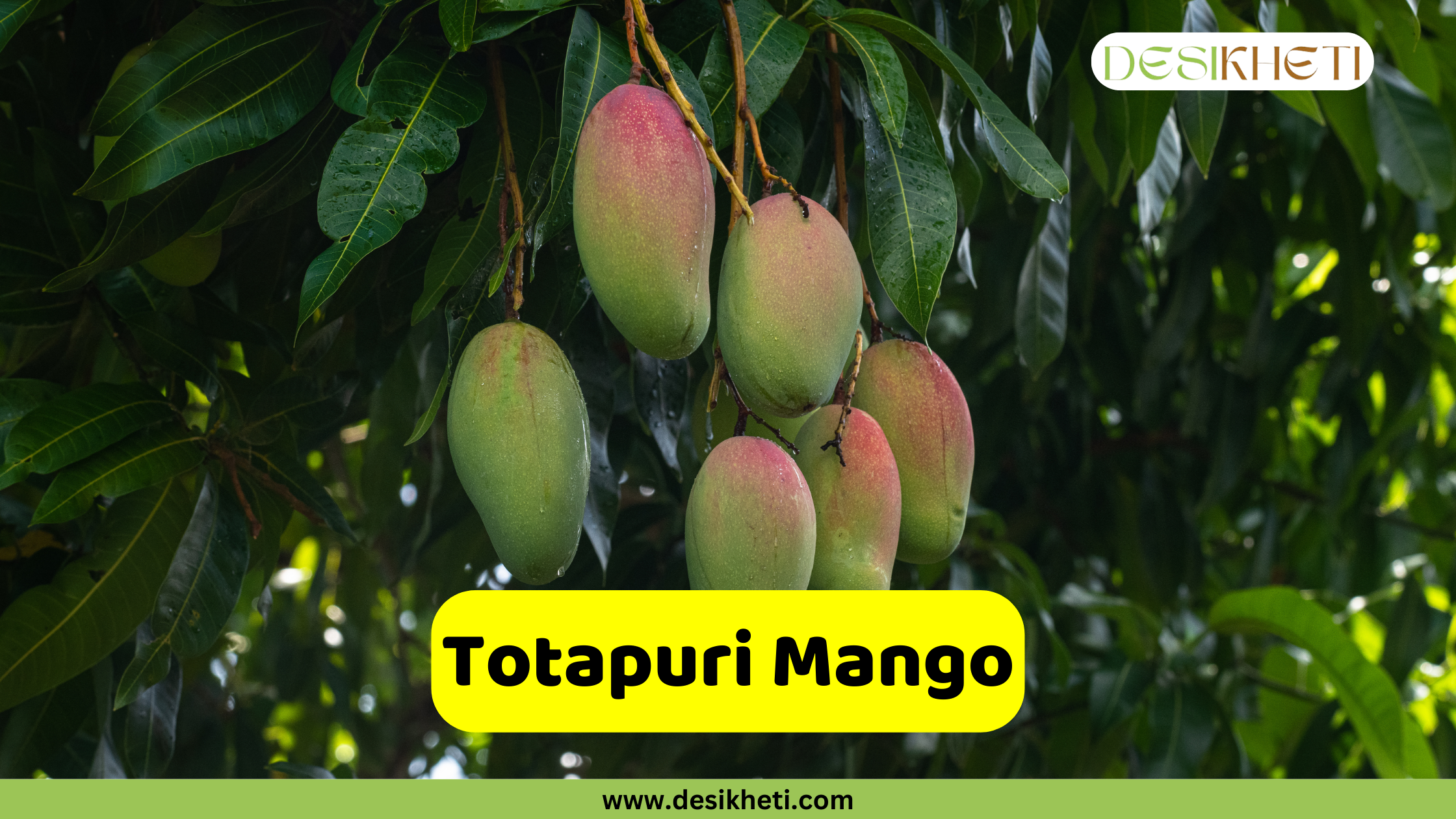
The name “Totapuri” is inspired by its distinctive parrot beak-like shape and greenish-yellow skin, which resembles the vibrant plumage of a parrot.
Believed to have originated in Andhra Pradesh, Totapuri mangoes are also widely cultivated in Karnataka, Tamil Nadu, and Telangana. This mango variety is known for its fleshy texture and mildly sweet, slightly tangy flavor. As the fruit ripens, its greenish-yellow skin gradually transforms into a reddish-yellow hue, making it visually appealing as well.
Totapuri mangoes are exported to several international markets, including countries in the Middle East, Southeast Asia, and parts of Europe, thanks to their good shelf life and distinctive taste.
This mango is easy to identify due to its elongated, oblong shape that closely resembles a parrot’s beak.
Chaunsa Mango
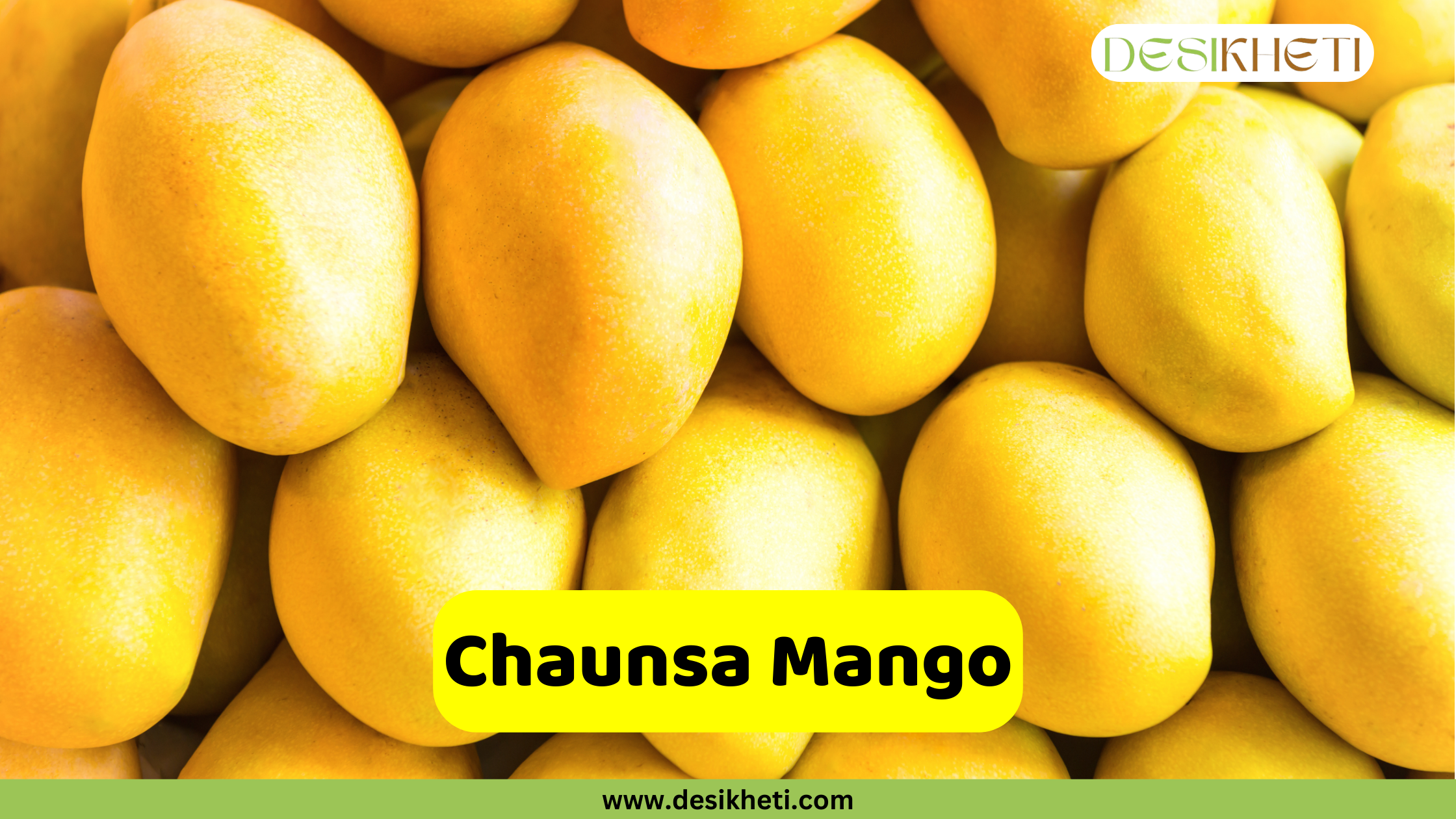
The Chaunsa variety of mango was popularized by the Indian ruler Sher Shah Suri to commemorate his victory over Humayun at Chausa in Bihar. To honor this triumph, he named his favorite mango “Chaunsa.”
Chaunsa mangoes are primarily grown in Uttar Pradesh and Bihar. The fruit develops a golden-yellow color when fully ripe, has a rich, aromatic sweetness, and is nearly fiberless. Known for its juicy and flavorful flesh, this mango is commonly enjoyed fresh. However, it is also widely used in juices, smoothies, chutneys, and desserts due to its exceptional taste and smooth texture
Himsagar Mango
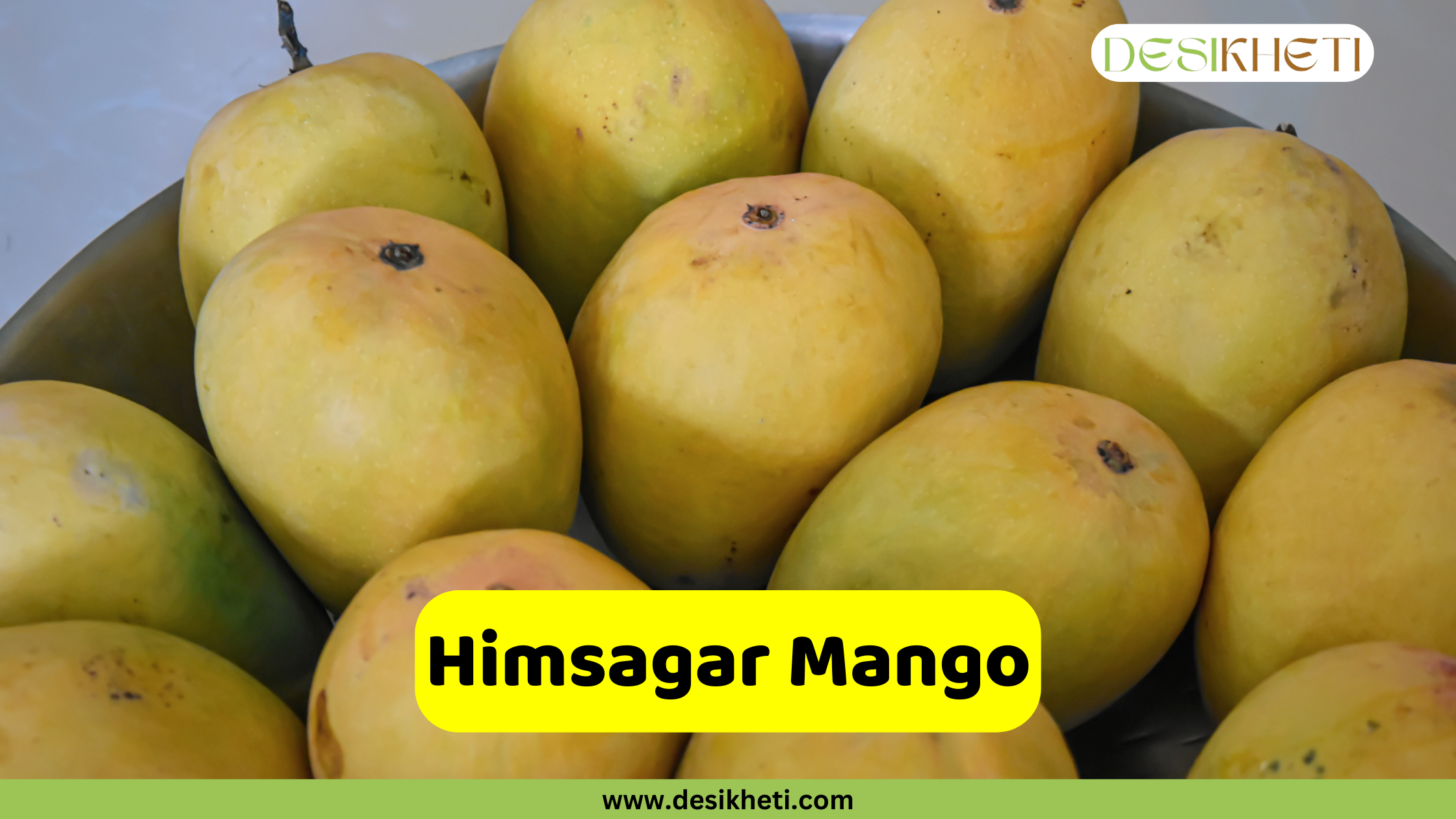
Originating in present-day Bangladesh and the state of West Bengal in India, the Himsagar mango is sometimes referred to as the “King of Bengal Mangoes.” This mango is also known by other names such as Khirsapat and Kishan Bhogi.
In India, Himsagar mangoes are primarily grown in West Bengal, especially in districts like Murshidabad, Nadia, Malda, and Hooghly. This mango received the GI tag in the year 2011.
The Himsagar mango has a greenish-yellow skin that often remains mostly green even when fully ripe, making it tricky to judge ripeness from the outside. Its inner flesh is deep yellow, juicy, fiberless, and highly aromatic.With its rich, honey-like sweetness and creamy texture, it is mostly eaten fresh.
Langra Mango
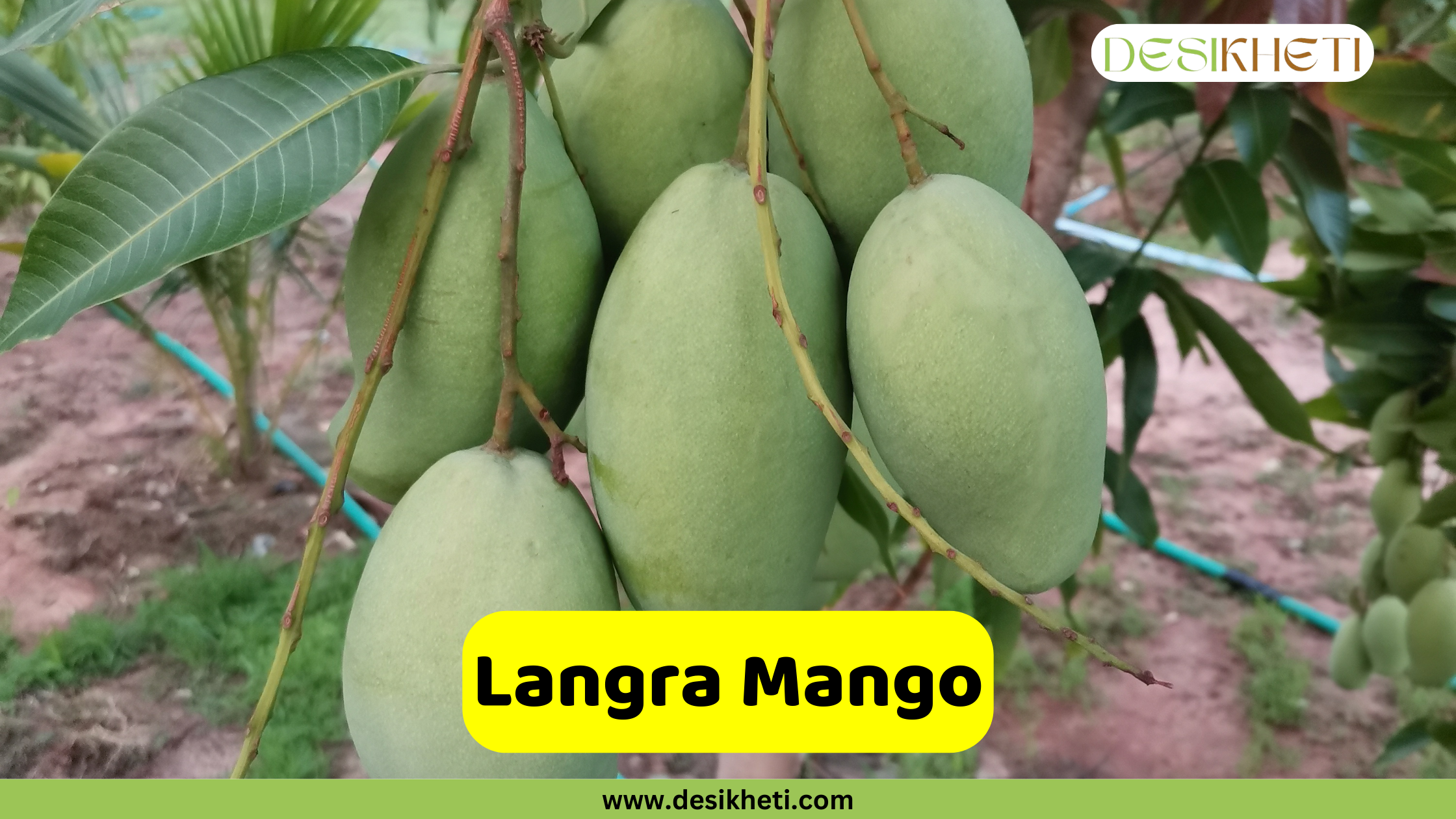
The Langra mango, also known as Banarasi Langra, is one of the most cherished mango varieties in India.
This iconic variety traces its origins back over 250 years to Varanasi (formerly Banaras) in Uttar Pradesh. According to local legend, the first Langra mango tree was cultivated by a physically disabled farmer, locally referred to as “Langra.”
Langra mangoes are primarily grown in Uttar Pradesh and Bihar. Renowned for their sweet and mildly tangy flavor, Langra mangoes are best enjoyed fresh.
Neelum Mango

Neelum mangoes are widely cultivated across Andhra Pradesh, Tamil Nadu, Karnataka, Maharashtra, Telangana, and several other Indian states. They are popular throughout India for their delightful taste and versatility.
This variety features smooth, thin skin that turns golden-yellow with a slight reddish blush as it ripens. The flesh is medium-firm, juicy, and low in fiber, making it ideal for both fresh consumption and processing.
Neelum mangoes are easy to identify due to their small to medium size, slightly oblong shape, and pointed tip.
Kesar Mango
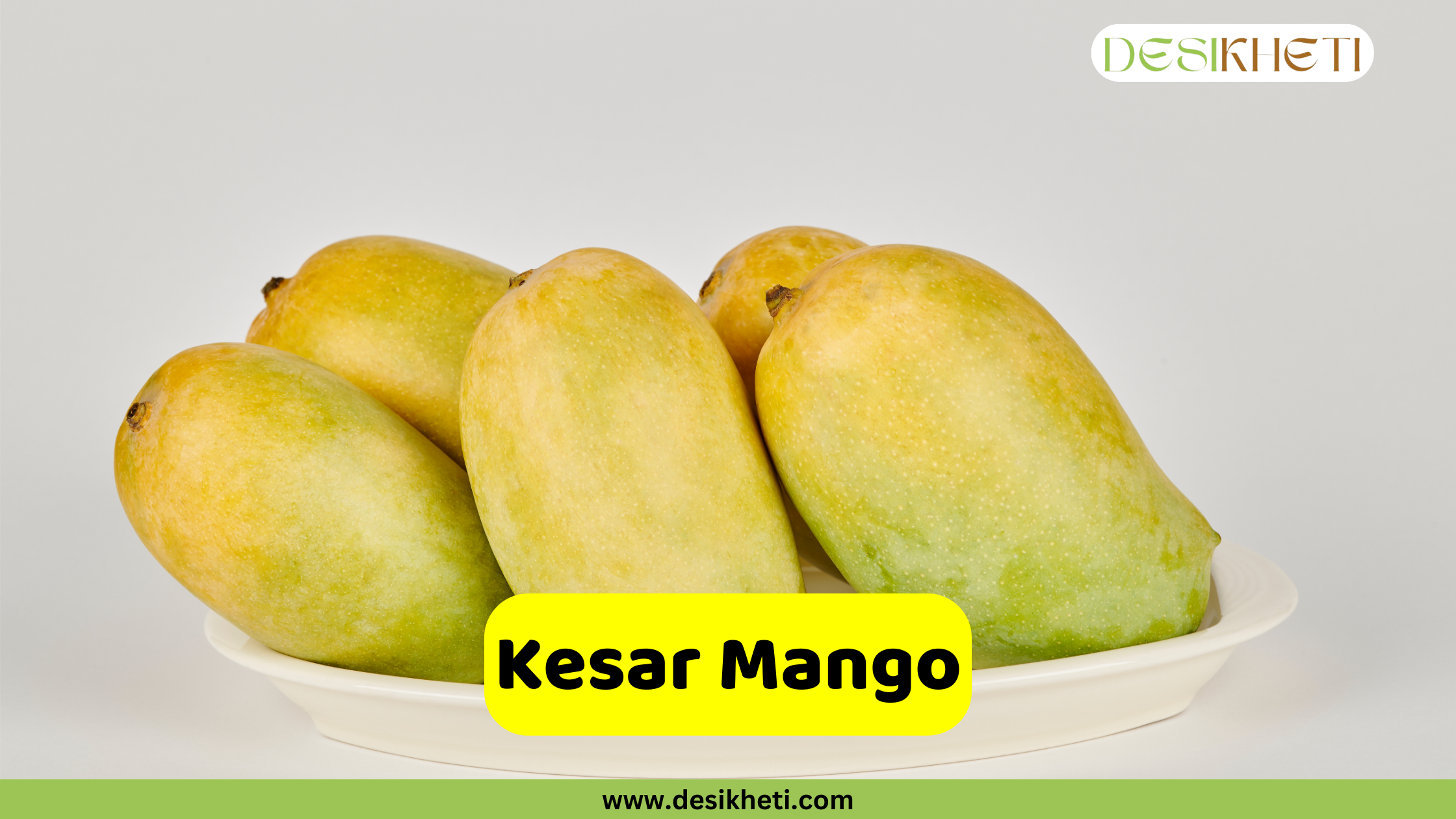
The origin of the Kesar mango traces back to the Girnar hills in Gujarat. It is believed that the mango was named “Kesar” in 1934 when the Nawab of Junagadh, Muhammad Mahabat Khan III, referred to it as Kesar upon seeing the fruit’s saffron-colored pulp.This variety received the GI (Geographical Indication) tag in 2011.
Kesar mangoes are primarily grown in Gujarat. However, those cultivated around the Gir Sanctuary area are known as “Gir Kesar Mangoes.”
The Kesar mango is medium-sized with a roundish shape and a slightly curved tip. Its skin is thin, smooth, and light yellow, often retaining a hint of green even when fully ripe. The inner flesh is juicy, sweet, and slightly tangy. Its naturally thick pulp is highly valued for commercial processing, making it a favorite in both domestic and export markets.
Now that we’ve explored 10 popular mango varieties in India, let’s quickly go through some famous mango varieties from each state.
Popular Mango Varieties in India : State-wise List
Here’s a state-wise list of some of the most popular mango varieties in India. Each state has its own local favorites, and together, they highlight the incredible diversity and richness of India’s mango heritage.
Popular Mango Varieties in Andhra Pradesh
- Banganapalli Mango
- Suvarnarekha Mango
- Neelum Mango
- Totapuri Mango
- Allumpur Baneshan Mango
- Bangalora Mango
- Cherukurasam Mango
- Himayuddin Mango
Popular Mango Varieties in Bihar
- Bombai Mango
- Chausa Mango
- Dashehari Mango
- Fazli Mango
- Gulab Khas Mango
- Kishen Bhog Mango
- Himsagar Mango
- Zardalu Mango
- Langra Mango
- Bathua Mango
- Sukul Mango
Popular Mango Varieties in Goa
- Fernandin Mango
- Mankurad Mango
Popular Mango Varieties in Gujarat
- Kesar Mango
- Alphonso Mango
- Rajapuri Mango
- Jamadar Mango
- Totapuri Mango
- Neelum Mango
- Dashehari Mango
- Langra Mango
- Vanraj Mango
Popular Mango Varieties in Haryana
- Chausa Mango
- Dashehari Mango
- Langra Mango
- Fazli Mango
- Sarauli Mango
Popular Mango Varieties in Himachal Pradesh
- Chausa Mango
- Dashehari Mango
- Langra Mango
Popular Mango Varieties in Karnataka
- Alphonso Mango
- Totapuri Mango
- Banganapalli Mango
- Pairi Mango
- Neelum Mango
- Mulgoa Mango
- Bangalora Mango
Popular Mango Varieties in Kerala
- Mundappa Mango
- Olour Mango
- Pairi Mango
Popular Mango Varieties in Madhya Pradesh
- Alphonso Mango
- Bombay Green Mango
- Dashehari Mango
- Fazli Mango
- Langra Mango
- Neelum Mango
- Sundena Mango
- Amrapali Mango
- Mallika Mango
Popular Mango Varieties in Maharashtra
- Alphonso Mango
- Mulgoa Mango
- Pairi Mango
- Rajapuri Mango
- Kesar Mango
- Gulabi Mango
- Vanraj Mango
- Mankurad Mango
Popular Mango Varieties in Odisha
- Baneshan Mango
- Langra Mango
- Neelum Mango
- Suvarnarekha Mango
- Amrapali Mango
- Mallika Mango
Popular Mango Varieties in Punjab
- Dashehari Mango
- Chausa Mango
- Malda Mango
- Langra Mango
Popular Mango Varieties in Rajasthan
- Bombay Green Mango
- Chausa Mango
- Dashehari Mango
- Langra Mango
Popular Mango Varieties in Tamil Nadu
- Alphonso Mango
- Totapuri Mango
- Banganapalli Mango
- Neelum Mango
- Rumani Mango
- Bangalora Mango
- Mulgoa Mango
Popular Mango Varieties in Uttar Pradesh
- Bombay Green Mango
- Chausa Mango
- Dashehari Mango
- Langra Mango
- Safeda Lucknow Mango
- Fazli Mango
Popular Mango Varieties in West Bengal
- Fazli Mango
- Gulab Khas Mango
- Himsagar Mango
- Kishen Bhog Mango
- Langra Mango
- Bombai Mango
- Amrapali Mango
- Mallika Mango
From the world-famous Alphonso to the aromatic Neelum, India’s diverse mango varieties offer a rich blend of flavors, textures, and cultural heritage. Each type of mango from different regions of India brings something unique to the table, whether it’s sweetness, tanginess, or a story rooted in tradition.
So, the next time you bite into a mango, remember that you’re enjoying more than just a fruit, you’re tasting a piece of India’s agricultural and culinary legacy.
Mention your favourite mango variety in the comments below!
Join DesiKheti Whatsapp Channel for regular updates, farming tips, and information on agriculture.
